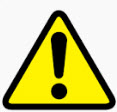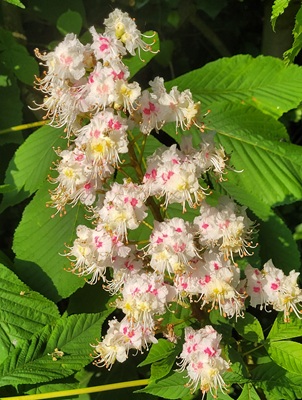Flower Properties
| Property | Value |
|---|---|
| English Name | Horse Chestnut |
| MainColor | White |
| PlantType | |
| Growth Type | |
| Season | May |
| ImageUrl | Aesculus-002 |
| Photographer | DP |
| Location | |
| Human Toxicity |
Flower Details
Description
A large, stately tree with palmate leaves, upright flower spikes in spring, and spiny seed cases containing glossy brown conkers. Widely planted across the UK.
Distribution
Native to the Balkans; introduced to the UK in the 17th century.
Medicinal/Other Uses

Extracts (from seeds and bark) used in herbal medicine for circulatory issues (chronic venous insufficiency).
Edibility
Conkers are not edible for humans (toxic if consumed raw).
Human Toxicity

Seeds, leaves, and bark contain toxic compounds that can cause vomiting, diarrhoea, and even neurological issues if ingested by humans or animals.
Pet Toxicity

Toxic – dangerous to cats, dogs, and horses if eaten.
Active Compounds
Aesculin, saponins, coumarins.
